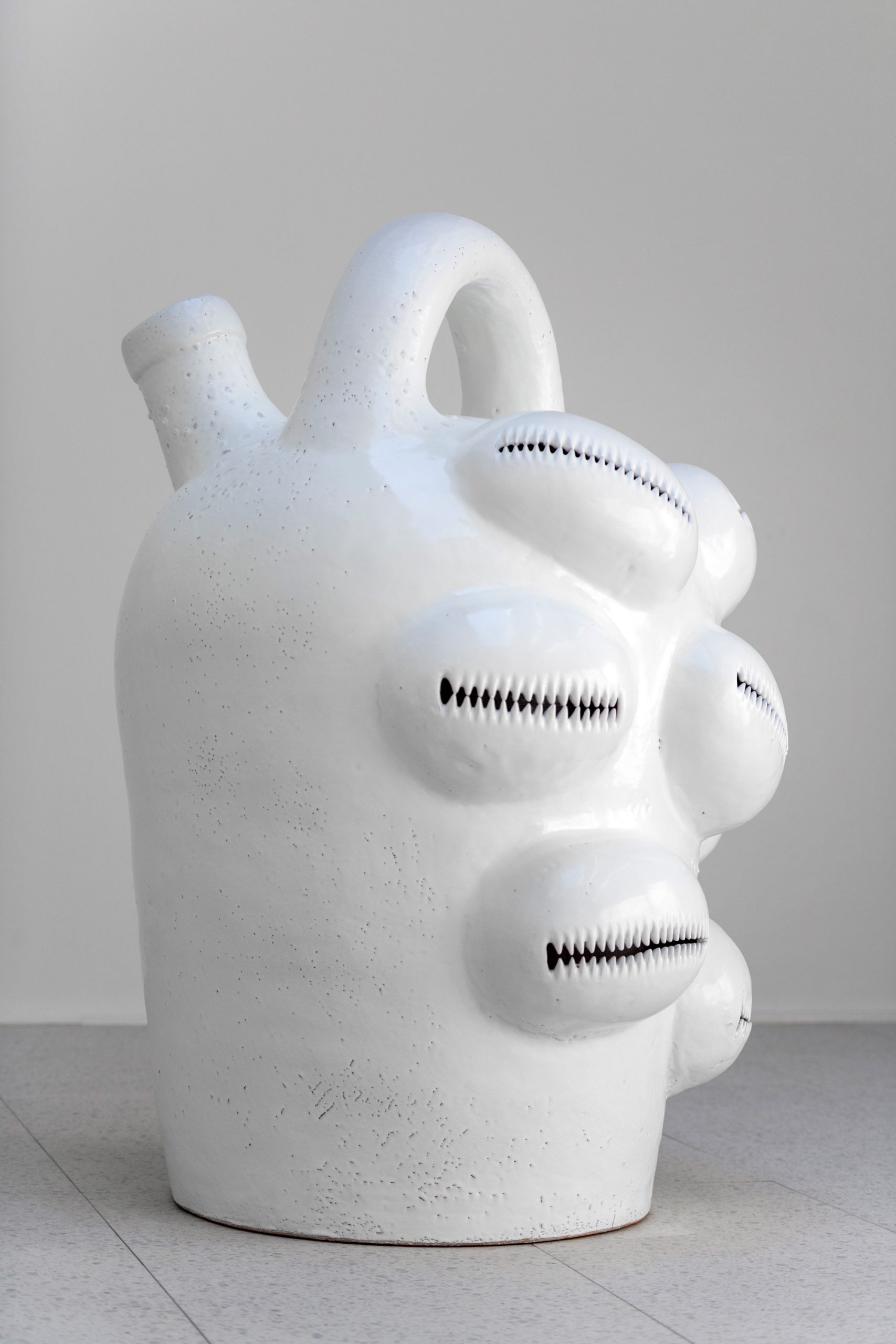
Simone Leigh, Jug, 2022. Stoneware. 62 1/2 × 40 3/4 × 45 3/4 inches (158 × 103.5 × 116.2 cm). Institute of Contemporary Art/Boston. Acquired through the generosity of Susana and Clark Bernard, Adelle Chang and Eddie Yoon, the Miller-Coblentz Family, Grace Colby, Fotene Demoulas and Tom Coté, Mathieu O. Gaulin, Jessica Knez and Nicolas Dulac, Christine and John Maraganore, and the Acquisitions Circle. Courtesy the artist and Matthew Marks Gallery. Photo by Timothy Schenck. © Simone Leigh
